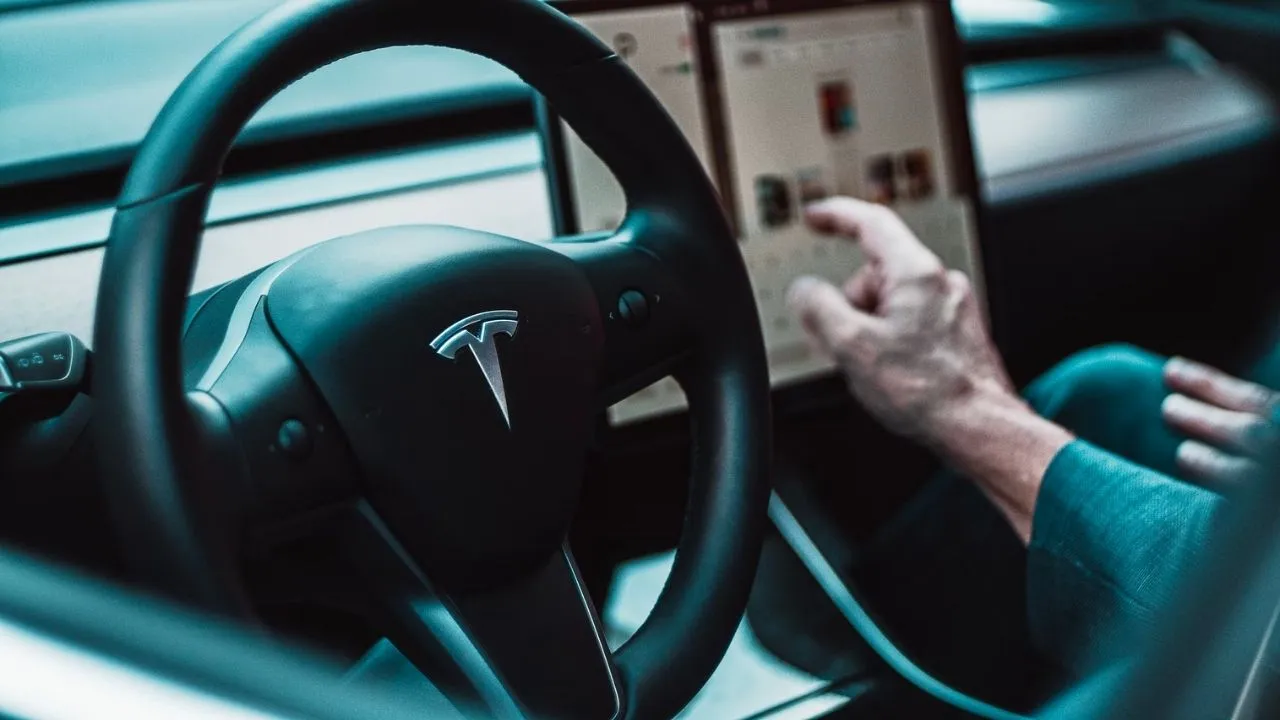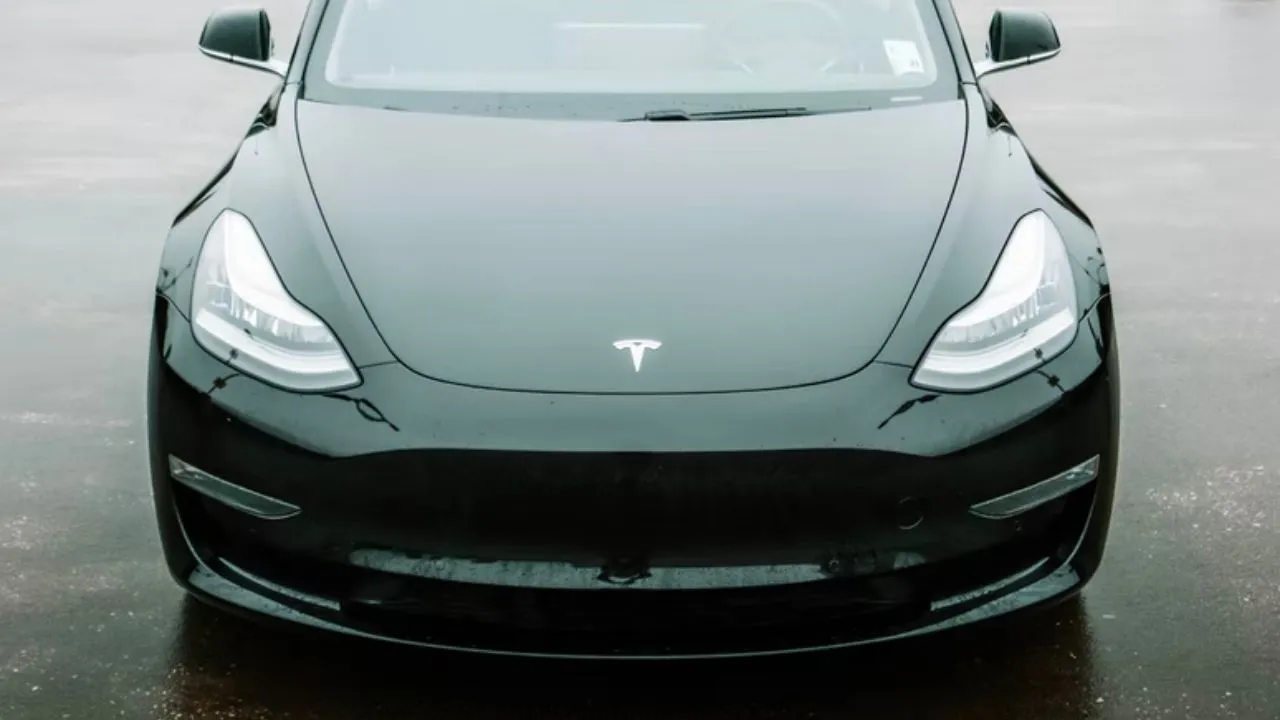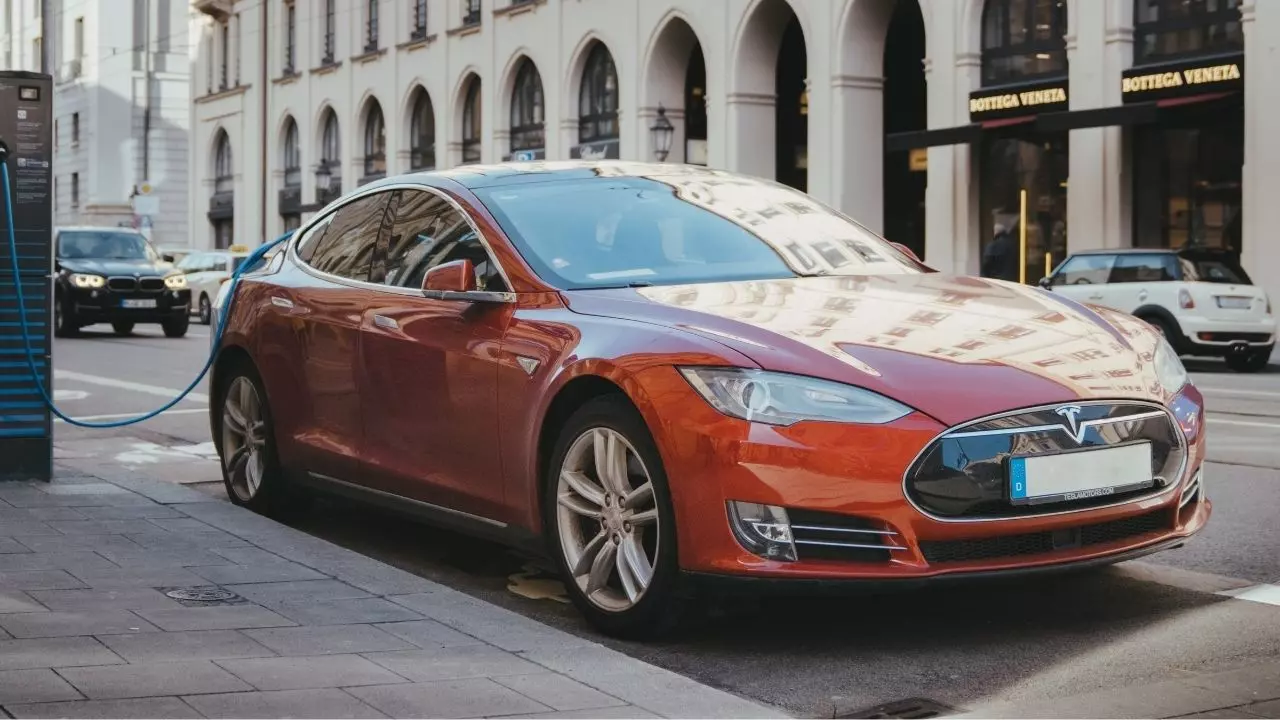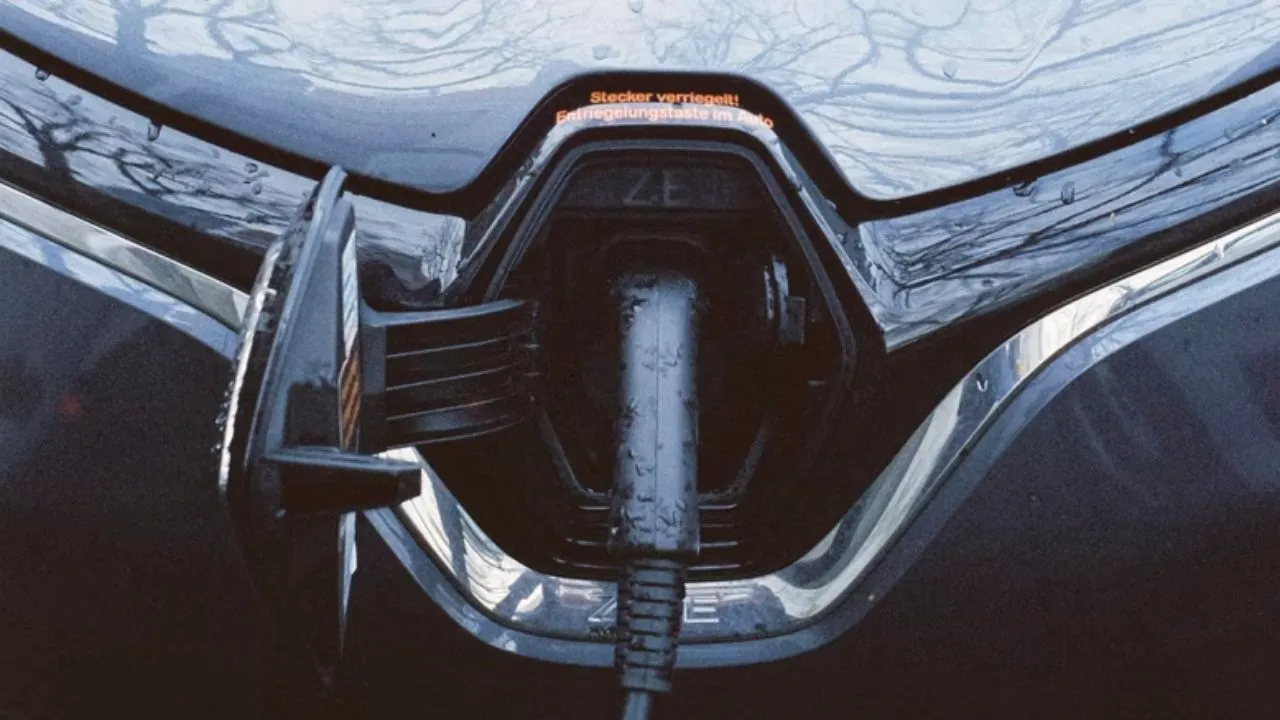A battery is a device that converts electrical energy into mechanical energy. For example, electric vehicles use batteries to power electric motors. In this article, we will explain how an electric vehicle battery works.
How Does an Electric Vehicle Battery Work?
The electric motor in an electric vehicle converts electrical energy into mechanical energy. This mechanical energy is used to move the car. The battery stores this electrical energy and releases it when the car needs it, like when you start the engine.
The battery in an electric vehicle usually contains two types of cells: lead-acid and lithium-ion. Lead-acid batteries are less expensive but heavier and less efficient than lithium-ion batteries.
What Type Of Battery Is Used In Electric Cars?
An electric car battery is made up of multiple cells. The cells are interconnected and use a chemical reaction to create electricity. Some electric cars use lithium-ion batteries, while others use nickel-cadmium or lead-acid batteries. The type of battery used in an electric car affects the car’s range and how quickly the car can start.
When you start your electric car, the battery power the electric motor, and the electric motor turns the wheel and propels the car forward. The battery also powers the lights and other accessories on the car. The battery can last for up to 50 miles before it needs to be recharged. Also, the battery will start to lose its power after a certain amount of time has passed since it was last charged. This is why it is essential to regularly charge your electric car’s battery.

Why Do Electric Cars Still Have A Lead-Acid Battery?
Lead-acid batteries are still used in electric cars because they are cheap and reliable. Lead-acid batteries use a chemical called to lead to store energy. When you want to use the battery, you have to recharge it. This is done by running the car’s engine until the battery is almost empty and then using the car’s electrical system to recharge it. The process of recharging the battery can take a few hours.
Furthermore, lead-acid batteries can be discharged and recharged many times. This is important because an electric car needs to be able to start quickly in cold weather or when the battery is almost out of power. Therefore, the lead-acid battery can still provide power to the car even if it is almost drained.
Do Electric Cars Run Out Of Battery?
Electric cars run on batteries that store energy. When you start the car, the battery sends power to all of the car’s electric motors. This initial burst of power helps the car move forward. After that, the battery keeps sending power to the motors as you drive until you stop at a red light or pull into a parking spot.
As you drive, the battery is constantly draining because it provides power to all of the car’s electric motors. So, when you stop at a red light or pull into a parking spot, your battery is almost completely drained, and your car will need to be plugged in to get juice for those motors. So, yes, electric cars do run out of battery. But, with a little bit of planning, you can make sure that you always have enough power to get you where you’re going.
How Long Do Batteries Last In Electric Cars?
Electric cars work by using a battery to store energy. The electric engine charges the battery, and when you start the car, it uses this energy to turn the wheels.
The battery lasts for a specific time, depending on how much you use the car. If you only use it for short trips, the battery will last for around 30 minutes. If you use it more often, then the battery will last longer. The average battery in an electric car lasts around 60 miles.
While electric cars use a battery, this does not mean the car is not environmentally friendly. The battery is made of recycled materials. The electric car emits no emissions. Compared to a petrol car, the electric car is more environmentally friendly.

What Happens When Electric Car Battery Dies?
Electric cars work by using a battery to store energy. The electric engine charges the battery, and when you start the car, it uses this energy to turn the wheels. If the battery dies, your car will not be able to move. So you will need to get a new battery.
When an electric car battery dies, the electricity that was once stored inside is no longer available. Therefore, the battery needs to be recharged to continue functioning. Recharging an electric car battery can take a few hours or take a few days, depending on the type of charger and how depleted the battery is. If a rechargeable electric car battery dies, it can be replaced with a new one.
Do Electric Cars Lose Charge When Parked?
An electric car battery works by using an electric current to turn a set of rotating magnets into a rotating motor. The magnets create a current that powers the car. When you stop driving the electric car, the batteries will slowly lose power because there is no electric current going to them. The car will eventually need to be recharged if it is not used for a while. So, in a way, electric cars do lose some charge when parked.
Even though electric cars lose some charge when parked, they do not need to be changed as often as traditional cars. A full charge will usually last around 250 miles, about the same as a traditional car’s range. The main reason electric cars need to be recharged less is that they use much less energy.
What Happens If Your Electric Car Runs Out Of Battery In The Middle Of Nowhere?
If your car’s battery runs out of juice in the middle of nowhere, you’ll likely be stranded. The electric car battery provides a minimum amount of power to keep the car moving, even if the engine isn’t working. When the battery is depleted, the car will stop moving and require assistance to get going again.
Most electric cars have a backup system to start the engine using electricity from the battery. If this backup system isn’t available, you’ll need to find a place to go for help. You may be able to use your phone’s GPS to find a nearby gas station or someone who can help you tow your car. Always be sure to have a backup plan in case of an emergency. In a moment of desperation, you might be able to try to start the car using the key fob. Be sure to have a look at the owner’s manual for your particular car for more information on how to do this.
Should I Unplug My Electric Car Charger When Not In Use?
When you unplug an electric car charger, you’re breaking the electrical connection between the charger and the battery. You should leave your electric car chargers plugged in when not in use to help prevent this type of damage. If you’re not using the charger, you should store it in a location where children can’t easily access it. If you do accidentally unplug the charger, don’t panic. Just plug it back in and wait for the green charging light to turn on again. The charging process shouldn’t take very long.

Does Tesla Battery Drain While Park?
An electric vehicle battery works using a chemical reaction to convert stored energy from a fuel into an electrical current. The battery is usually composed of several cells, each storing a limited amount of energy. When the electric vehicle is in use, the battery sends power to the motor and other components.
When the electric vehicle is parked, the battery still needs to provide power to the motor so it can stay running. The way that an electric vehicle battery maintains power while parked is by using regenerative braking. This process uses energy initially used to push the car forward to recharge the battery.
Tesla batteries are designed to maintain a certain power level even when the car is not moving. This is done by using a battery management system (BMS) which monitors the battery health and adjusts the power output accordingly. So long as the BMS is functioning correctly, the electric vehicle should not experience any battery drain while parked.
Are Tesla Batteries Lithium-ion?
The electric vehicle battery is one of the most critical and complex components in an electric car. It is responsible for storing energy from the electric motor and providing it to the car’s electrical system when needed.
Electric vehicle batteries are usually made of two different materials: lead-acid and lithium-ion. Lead-acid batteries are cheaper and more common, but they do not last as long as lithium-ion batteries. On the other hand, lithium-ion batteries are more expensive upfront. Still, they can last much longer than lead-acid batteries, and they don’t require periodic charging as lead-acid batteries do.
Most electric vehicles use lithium-ion battery technology because it offers many benefits over lead-acid battery technology. For example, lithium-ion batteries can be discharged much further before recharging, which allows for longer driving distances. They also have a much faster charge time than lead-acid batteries, which is essential for people who want to use their electric vehicles on the go. Tesla vehicles use the latest in lithium-ion battery technology, known as the Tesla Model S and Tesla Model X.

Electric Car Battery Maintenance and Care
An electric car battery is a lithium-ion battery. It is similar to a typical battery but contains more cells and weighs more. An electric car battery has several connected cells in series and parallel. The cells are usually arranged in a cylindrical shape. When the electric car battery is charging, the electrons flow from the higher voltage cell to the lower voltage cell. Likewise, when the electric car battery is using power, the electrons flow from the lower voltage cell to the higher voltage cell. We list the components of an electric car battery below.
An electric car battery consists of the following:
- Cells: The cells are the individual units that make up the electric car battery. Each cell has a chemical reaction that creates electricity.
- Housing: The housing is the shell or cover that protects the cells and contains circuitry and other components.
- Connectors: The connectors connect one cell to another in series or parallel.
- Terminal: The terminal connects the cells to the housing and provides power to the car.
When you charge your electric car battery, you provide electricity to the cells. The cells will use this electricity to create a current. The terminal will provide power to the car.
Electric Car Battery Maintenance Tips
- Make sure the battery is fully charged
- Check the battery electrolyte level regularly
- Check the battery cooling system regularly
- Clean and inspect the battery terminals and insulation
- Protect the battery from freezing
Conclusion
In this article, we have outlined the basics of electric car batteries and presented some maintenance tips. We hope that this information will help you keep your battery in good shape and ensure that your electric car can operate at its best.
Batteries are an essential part of electric vehicles. They provide power for the electric motors and allow cars to be driven distances on a single charge. So it is essential to keep your battery in good condition. Don’t forget to charge your battery regularly and check the electrolyte level. If you follow these tips, your electric car will be able to run smoothly and efficiently.
